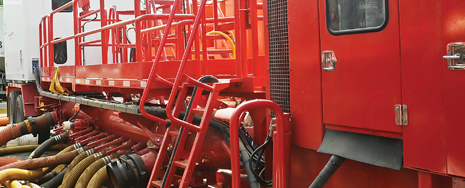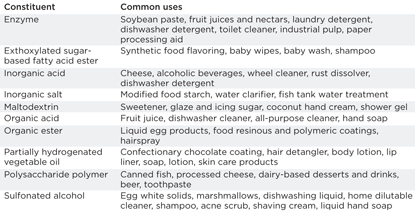Haynesville trial well applies environmentally focused shale technologies
As part of a companywide HSE strategy, El Paso Corp. incorporated methods to reduce water use and hazardous chemicals handling into its hybrid frac design.
JEFF LOWRY, VALERIE YEAGER and MARK RITCHIE, Halliburton; and BARRY H. LLOYD, El PasoAs part of a companywide HSE strategy, El Paso Corp. incorporated methods to reduce water use and hazardous chemicals handling into its hybrid frac design.
Fluid systems being injected underground for oil and gas production have come under increasing environmental scrutiny in recent years. Operators, governmental agencies, the public and environmental groups are demanding greater disclosure of chemical components and the use of more environmentally benign components. For years, El Paso Corp. has investigated ways to implement new environmentally focused technologies, most notably in shale stimulation. Since the company’s entrance into the Haynesville shale of northern Louisiana in 2008, it has completed more than 100 wells. On average, each of these well treatments requires about 4.8 million gal of water. Sourcing this water and minimizing the use of hazardous additives quickly became a priority for the company. After a series of trials beginning in October 2009, El Paso incorporated three new technologies into the completion of a 14-stage horizontal well in March 2011: electrocoagulation for water recycling, a food industry-sourced frac fluid and ultraviolet light disinfection. WATER RECYCLING One of the main challenges for E&P companies is to find sources for the extraordinary water requirements of shale programs. Heavy state and local regulations, accompanied by recent drought conditions in some producing areas, further burden the process. Looking for internal sources to reduce its freshwater dependency, El Paso found a potential supply in the enormous produced water volumes from its Holly field assets in DeSoto Parish. Multiple intervals in the field produce up to 15,000 bpd of brine, whose high salt content provides sufficient ionic strength to control clay swelling in shale. Thus, the brine could potentially replace costly clay-control additives used in frac fluids. Furthermore, the Haynesville fracturing load recovery averages 12%, giving a production well the added benefit of doubling as a saltwater disposal well. To enable the recycling of this brine as frac fluid, it required treatment by electrocoagulation (EC), which employs an electrical process that destabilizes and coagulates suspended colloidal matter in water. When contaminated water passes through the EC cells, the anodic process releases positively charged ions that bind onto the negatively charged colloidal particles, resulting in coagulation. At the same time, gas bubbles produced at the cathode attach to the coagulated matter, causing it to float to the surface where it is removed by a skimmer. Heavier coagulants sink to the bottom, leaving clear brine suitable for use in drilling and production operations. To the authors’ knowledge, this work represents the first successful instance of produced water reuse in high-temperature borate crosslinked gels. Earlier reports of produced water reuse for fracturing have primarily been slickwater applications. In addition, most of those cases involved reusing the early-stage flowback water, which has significantly lower salinity than formation water. From an environmental-impact standpoint, recycling water in frac fluid greatly reduces freshwater demand. For the operator, cost savings were achieved primarily by the elimination of clay-control chemicals. UV BACTERIA CONTROL Fracturing fluids must use treated water to avoid problems that result from excessive bacteria, such as the corrosion of iron or steel, production of sour (high-H2S) fluids in the well, and degradation of the frac fluid. High bacteria content degrades frac fluid by making it too thin to create adequate geometry and carry proppants. Typically, chemical biocides are used to disinfect the water; however, most biocides are toxic chemicals that must be handled carefully and registered with federal, state and/or local environmental protection agencies. Additionally, biocides can interfere with chemical additives in the frac fluid and cause equipment damage. To address the issues associated with chemical biocides, a mobile, patented service has been developed that uses ultraviolet (UV) light to control bacteria at treatment rates up to 100 bbl/min. Use of UV light for disinfection enables operators to significantly reduce the volume of biocide needed to treat for aerobic and anaerobic (sulfate-reducing) bacteria, or potentially eliminate these chemicals altogether. Concentrations have routinely been lowered from 500 ppm (volume) to 250 ppm or even 100 ppm, resulting in biocide reductions of up to 80%. In some cases, UV disinfection can totally replace chemical biocides—which, in addition to direct cost benefits, also eliminates the HSE exposure related to transportation and handling of biocides for both service providers and the well operator. The UV disinfection service is a stand-alone mobile unit with a treatment trailer designed to be compatible with existing frac fluid blending equipment. During the fracturing operation, the treatment trailer is rigged between the frac tanks (water source) and the fracturing blender. The suction pump on the blender draws water from the frac tanks and through the treatment trailer, where it is disinfected. Micro-biology testing is routinely done to determine the level of bacteria in the water and also the effectiveness of the UV light disinfection. With waters that have light transmittance levels higher than about 35–40%, results routinely show better than a 99% reduction in both the sulfate-reducing and aerobic bacteria levels at fluid rates up to 100 bbl/min. FOOD-SOURCED FRAC FLUID A new frac fluid system comprised solely of ingredients sourced from the food industry was introduced in 2010. Using only components that have been approved by the US Food and Drug Administration for direct addition to food provides an extra margin of safety to people, animals and the environment, in the event of fluid accidentally being released at the wellsite (see table). The new frac fluid also provides excellent pumpability, proppant transport and regained conductivity within the propped fractures. The system has been used over a large bottomhole temperature range of 90–240°F.
The fluid system can be crosslinked and used for conventional gelled fracturing treatments, or used as a linear fluid system to provide friction reduction for slickwater frac treatments. It provides cleaner breaks than traditional frac fluid systems. The resulting cleaner break manifests itself in 80–100% regained conductivity under a variety of conditions and temperature ranges. This enhanced conductivity of the proppant pack is attributed to the lack of insoluble residue in the gelling agent and to a novel breaking package not based on traditional oxidizer chemistry. An advantage of this cleaner break is the fact that when the well flows back, it not only leaves the proppant in the formation, but it also flows back the frac fluid more rapidly, thus allowing production to resume or begin more quickly. APPLICATION The trial well had a vertical depth of 11,969 ft and a 14-stage horizontal completion across a 4,654-ft lateral, for a measured depth exceeding 17,000 ft. Bottomhole static temperature was estimated at 340°F. Since the maximum temperature range of the specific gelled fluid formulation used for this well is 225°F, substantial formation cooldown would be necessary for the cross-linked fluid system to remain stable throughout the frac. Conveniently, the hybrid frac design chosen by the operator in the Haynesville allows formation cooldown by pumping a large volume of water ahead of the main frac containing the crosslinked fluid and the bulk of the proppant. By the time the viscous gel reaches the formation, some 300,000 gal of water has reduced the formation temperature by an estimated 100–120°F, to within the optimum temperature stability range of the frac fluid. Although the mobile EC unit has the capacity to process water on the fly, for this job the produced water had to be treated and stored offsite. Once the EC process removed the suspended solids, oil, insoluble organics and bacteria from the water, it was ready to be trucked a short distance to a group of 500-bbl frac tanks at the wellsite. From there, it was mixed on the fly into the frac fluid at a 22% concentration—optimized for the total amount of water available and the clay-control ion-exchange capacity of the dissolved salts. Overall, the volume of flowback and produced water recycled for this one well was in excess of 1.05 million gal. At the operator’s drilling and completion rates for 2011, using this method in its Haynesville shale assets could result in 128.1 million gal of water recycled annually. The UV disinfection unit was inserted into the existing frac equipment rig-up without significant modification, supplying high-quality disinfection at rates up to 100 bbl/min. Over 4.8 million gal of fluid was treated using the UV unit, eliminating the handling exposure and usage of over 2,400 gal of chemical biocides. The complete fracturing program consisted of 4.8 million gal of fluid (of which 4.12 million gal was the food industry-sourced fluid) and 5.9 million lb of proppant. The design pumping rate was 80 bbl/min., at an expected treating pressure exceeding 11,000 psi at the surface. Because the treatment design called for a variety of fluid viscosities, the gel was mixed in concentrated form. This allowed for on-demand viscosity adjustments during the frac treatment. The gel was mixed at a split rate with the treated produced water from the EC unit. This fluid was then mixed with additives and proppant and pumped downhole. Once all the 14 frac stages along the lateral had been pumped, coiled tubing was used to drill out all of the frac plugs between stages before well flowback was initiated. Consequently, the frac fluid remained exposed to static bottomhole conditions for five days. The extreme downhole heat was sufficient to effectively break the gelled fluid and provide for maximum regained conductivity. As a result, the use of chemical breakers was eliminated, which yielded additional cost savings.
|
|||||||||||||||||||||||||||||||
- Shale technology: Bayesian variable pressure decline-curve analysis for shale gas wells (March 2024)
- Prices and governmental policies combine to stymie Canadian upstream growth (February 2024)
- U.S. producing gas wells increase despite low prices (February 2024)
- U.S. drilling: More of the same expected (February 2024)
- U.S. oil and natural gas production hits record highs (February 2024)
- U.S. upstream muddles along, with an eye toward 2024 (September 2023)
- Applying ultra-deep LWD resistivity technology successfully in a SAGD operation (May 2019)
- Adoption of wireless intelligent completions advances (May 2019)
- Majors double down as takeaway crunch eases (April 2019)
- What’s new in well logging and formation evaluation (April 2019)
- Qualification of a 20,000-psi subsea BOP: A collaborative approach (February 2019)
- ConocoPhillips’ Greg Leveille sees rapid trajectory of technical advancement continuing (February 2019)





